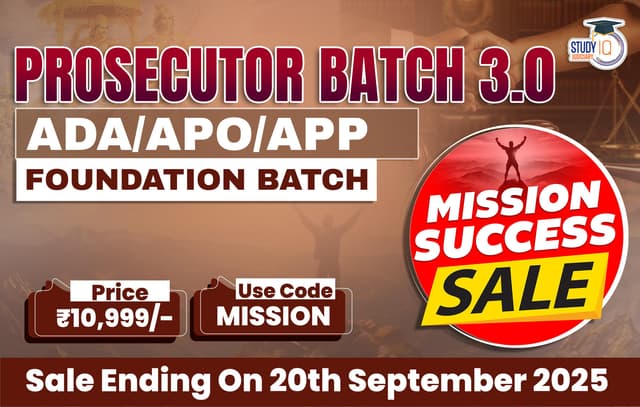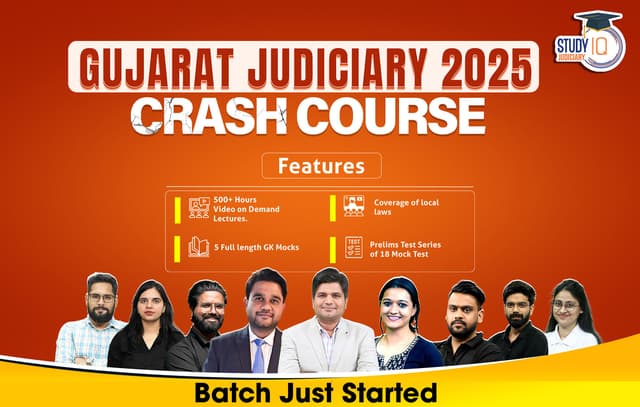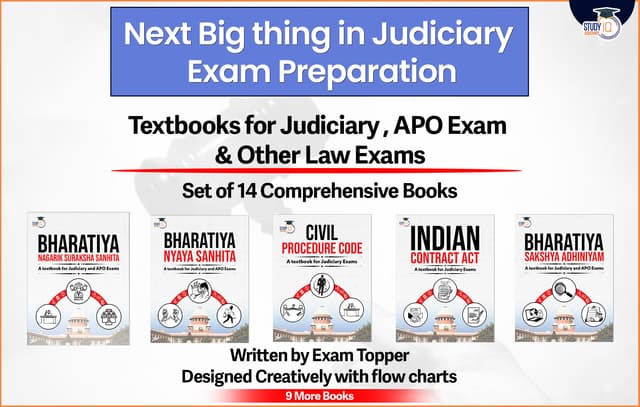Table of Contents
The enforcement of President’s Rule according to Article 356 of the Indian Constitution is a highly contentious aspect of Centre-State relations in India. Although intended as a constitutional protection against governmental failure within a State, the provision has frequently become a focal point for political manipulation and federal strife. The recent events in Manipur, which have been under President’s Rule since February 2025, have rekindled the discussion on the application, abuse, and reform of this extraordinary constitutional power.
Constitutional Basis for President’s Rule: Articles 356 and 365
- Article 356 grants the President of India the power to assume charge of a State’s administration in the event of a failure of its constitutional machinery.
- This may occur upon receiving a report from the Governor or even suo motu, meaning at the President’s own discretion.
- Article 365 enhances this power by categorising a State’s noncompliance with or refusal to execute Union directives as a basis for constitutional breakdown.
- The procedure involves:
-
- Presidential Proclamation
- Parliamentary approval within two months by a simple majority.
- Validity of six months, extendable every six months up to a maximum of three years
- Revocation by the President at any moment
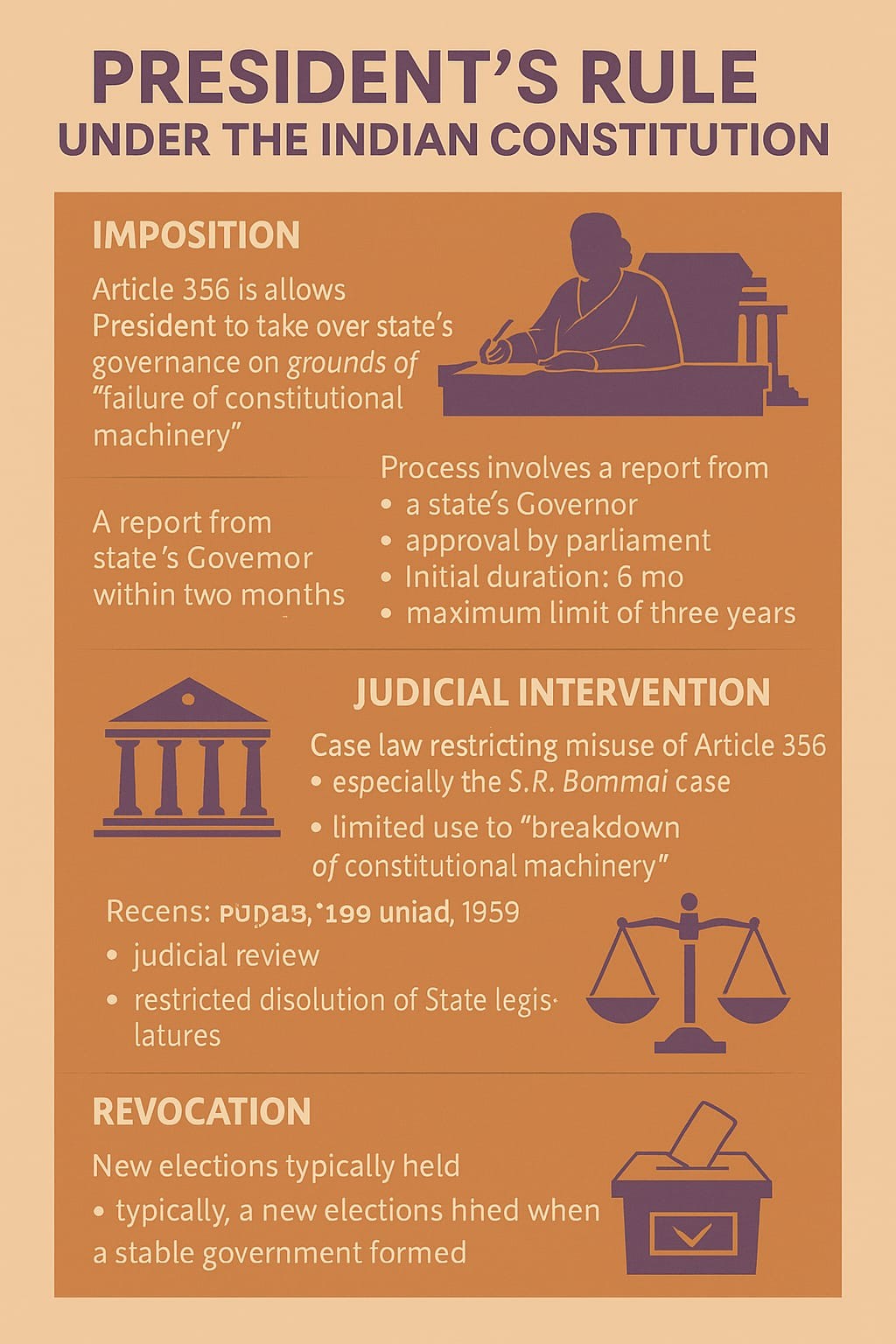
Ambedkar’s Vision and Early Concerns
- B.R. Ambedkar, the principal architect of the Constitution, specifically anticipated that Article 356 would remain a “dead letter.”
- During the Constituent Assembly Debates, he cautioned against its exploitation, underscoring its extraordinary nature.
- The provision was accepted with reluctance, partly influenced by similar emergency measures in the Government of India Act, 1935, but aimed to maintain constitutional order rather than political convenience.
Historical Use and Misuse: A Mixed Legacy
- Notwithstanding Ambedkar’s caution, Article 356 has been enacted more than 130 times since 1950.
- In the initial decades following Independence, the ruling party at the Centre frequently employed President’s Rule to dismantle State administrations run by opposing parties.
- Prominent instances comprise:
-
- Kerala (1959): The initial misuse, ousting a democratically elected communist administration.
- Punjab (1971) and Kerala (1970): Assemblies were dissolved based on questionable advice from the Chief Ministers.
- Arunachal Pradesh (2016) and Uttarakhand (2016): Ruled unconstitutional by the judiciary.
- Although occasionally warranted during times of severe unrest or constitutional impasse, such as the Punjab insurgency (1987–1992) or the Jammu and Kashmir crises, its application frequently demonstrates political opportunism rather than constitutional necessity.
Judicial Intervention: S. R. Bommai and Beyond
- The pivotal moment occurred in S. R. Bommai v. Union of India (1994), when the Supreme Court established explicit guidelines:
- The disintegration of constitutional machinery, rather than solely law and order, underpins Article 356.
- Judicial review is allowed.
- The Legislative Assembly cannot be dissolved before parliamentary approval; it can only be suspended.
- Floor tests are required to ascertain the majority.
- This landmark case has subsequently served as a safeguard against capricious dismissals of State administrations.
- The rulings in Bihar (2005), Uttarakhand (2016), and Arunachal Pradesh (2016) exemplify the judiciary’s role as a watchdog following the Bommai case.
Role of the Governor: A Discretionary Minefield
- Governors are crucial in initiating President’s Rule.
- Their judgment in evaluating constitutional breakdown, however, has not consistently been applied equitably.
- Instances from Punjab (1967, 1971), Uttar Pradesh (1968), and Madhya Pradesh (1969) illustrate discrepancies in the actions of Governors regarding similar political circumstances—some disbanding Assemblies despite doubtful majority claims, while others refrained from following such advice.
- This capriciousness has frequently attracted censure, with proposals to revise Article 356 or to govern the Governor’s responsibilities via a code of conduct or statutory regulations.
Contemporary Case Study: Manipur 2025
- In February 2025, President’s Rule was imposed in Manipur owing to declining security conditions and political instability.
- A delegation of MLAs recently urged the Governor to establish a functional government, with over 18 months left in the Assembly’s tenure, which concludes in March 2027.
- The assembly is now in a state of suspension, pending resolution.
- This situation exemplifies the constitutional inclination towards the reinstatement of representative governance rather than new elections or extended central authority.
- The emphasis is not solely on numerical majority but also societal legitimacy, particularly in conflict-prone areas such as Manipur.
Revocation of President’s Rule
- President’s Rule may be revoked at any moment, particularly when:
- A new government is established with a clear legislative majority.
- Elections are held, reinstating democratic legitimacy.
- Enhanced security and law enforcement promote constitutional governance.
- Consistent with the tenets of representative democracy, revocation frequently serves as the objective, with the Union functioning as a provisional caretaker.
Reforms and Future Outlook
- Although Article 356 was intended to protect the Constitution in extraordinary situations, its historical context illustrates both its advantages and drawbacks. The necessity for:
-
- Objective guidelines for Governors
- Transparent reports directly to the President.
- Minimal intervention by the Union in political affairs
- Judicial oversight is more evident than ever.
- President’s Rule has unequivocally facilitated the preservation of unity amid insurgencies, natural calamities, and governance failures.
- However, its legacy of abuse necessitates rectification by amendment to the constitution, legal precision, and democratic progress.
- Only then can this remarkable power achieve its intended purpose: the preservation, not the subversion, of Indian federalism.

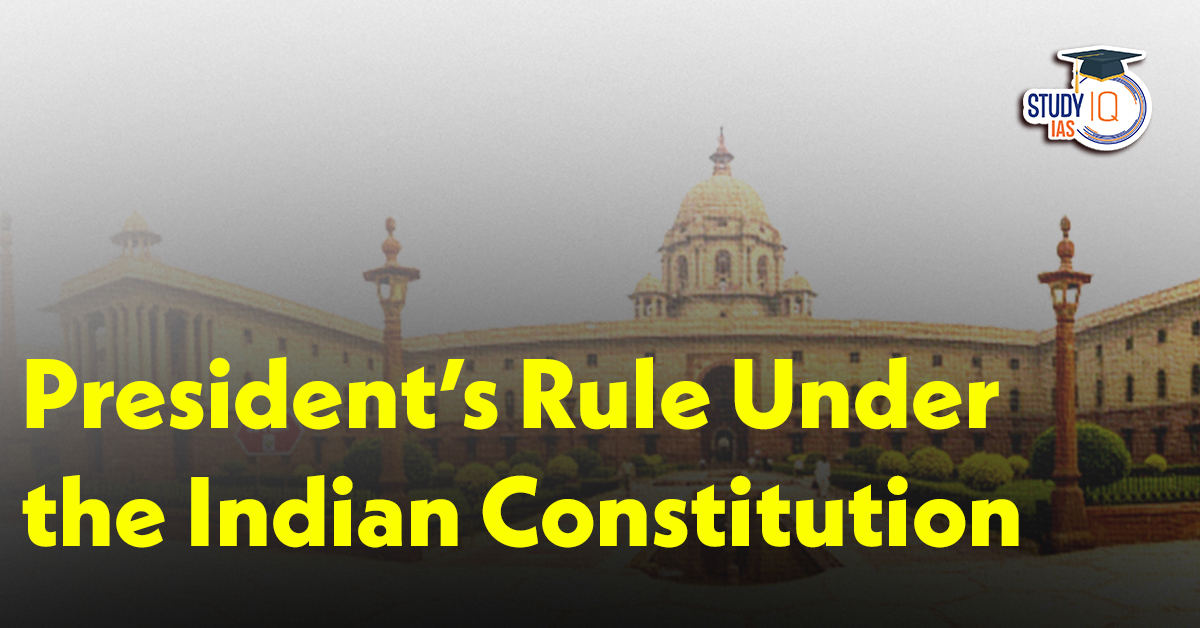
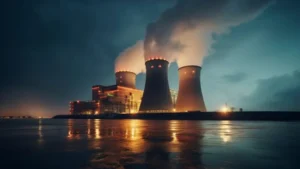 Ambiguities in India’s Nuclear Liabili...
Ambiguities in India’s Nuclear Liabili...
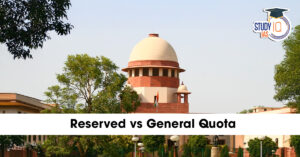 Reserved vs General Quota: Supreme Court...
Reserved vs General Quota: Supreme Court...


